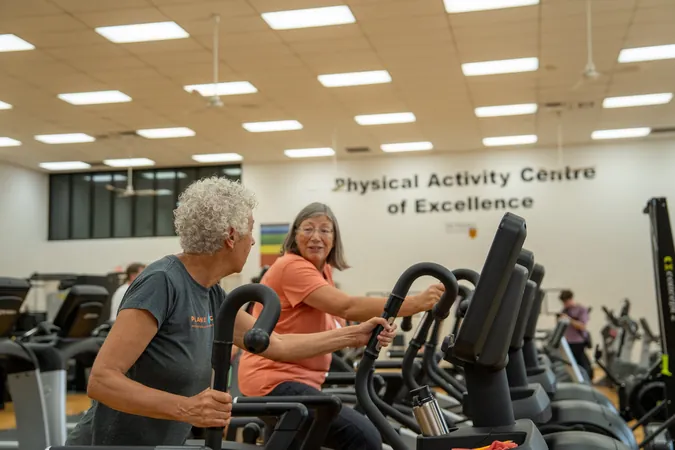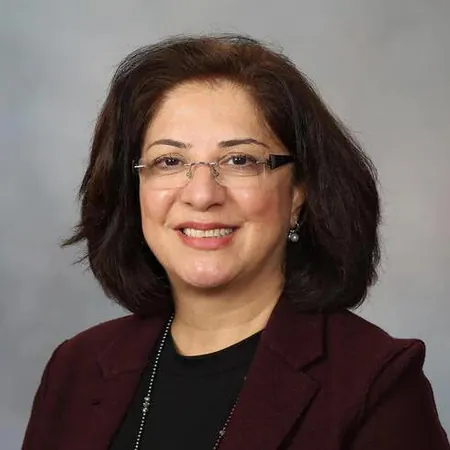
Unlocking Longevity: How Community Exercise Programs Transform Senior Health
2025-08-19
Author: John Tan
A groundbreaking study from McMaster University reveals that older adults engaged in community-based exercise programs can dramatically combat age-related declines in fitness and strength. This research shows not only a potential slowdown but, for many, a reversal of declining health metrics typically associated with aging.
Specifically beneficial for women, this study underscores the vital role that consistent, age-appropriate exercise plays in enhancing the well-being and functionality of seniors. As the population of those aged 65 and older continues to skyrocket, these findings could not be more timely.
The Study Unveiled
Published in the journal "Exercise, Sport, and Movement," the study tracked 124 participants involved in the MacSeniors Exercise and Wellness Program at McMaster's Physical Activity Center of Excellence (PACE) over five years. Researchers focused on two critical measures: cardiorespiratory fitness and muscle strength, both key indicators of quality of life, independence, and overall health risks.
Participants were encouraged to attend at least twice a week and engage in at least 30 minutes of moderate-intensity aerobic exercise each session—aiming for a minimum of 150 minutes weekly—along with resistance training targeting all major muscle groups.
Remarkable Results
The results were astonishing: while men exhibited a slower-than-expected decline in cardiorespiratory fitness, women showed actual improvements throughout the study. Both genders also maintained muscle strength levels beyond what was anticipated for their age.
Angelica McQuarrie, co-author and Program Manager at PACE, emphasizes, "As many physiological systems decline with age, the ability of participants to maintain or even improve their levels of fitness highlights the importance of community exercise programs."
Giulia Coletta, another co-author with a Ph.D. in kinesiology, added, "A supportive social environment plays a crucial role in keeping older adults engaged and motivated to continue their fitness journeys. Coupling this with an evidence-based program empowers them, fostering knowledge and confidence for independent exercise.
The Science Behind Decline
Research indicates that aerobic capacity begins its steady decline after age 30, accelerating between ages 45 and 50, and continues into the 70s and 80s. Muscle strength, vital for preventing falls and maintaining mobility, also starts to decrease around the same age.
Critical respiratory muscle strength can plunge by approximately 8-10% per decade post-40, posing significant health risks.
A Sustainable Solution
Stuart Phillips, director of PACE, points out that community programs offer a safe, cost-effective option for older adults. Exercise alongside peers in a friendly, supportive environment is not only encouraging but can transform lives. As he says, "It's never too late to start, and the impact on daily living can be profound."


 Brasil (PT)
Brasil (PT)
 Canada (EN)
Canada (EN)
 Chile (ES)
Chile (ES)
 Česko (CS)
Česko (CS)
 대한민국 (KO)
대한민국 (KO)
 España (ES)
España (ES)
 France (FR)
France (FR)
 Hong Kong (EN)
Hong Kong (EN)
 Italia (IT)
Italia (IT)
 日本 (JA)
日本 (JA)
 Magyarország (HU)
Magyarország (HU)
 Norge (NO)
Norge (NO)
 Polska (PL)
Polska (PL)
 Schweiz (DE)
Schweiz (DE)
 Singapore (EN)
Singapore (EN)
 Sverige (SV)
Sverige (SV)
 Suomi (FI)
Suomi (FI)
 Türkiye (TR)
Türkiye (TR)
 الإمارات العربية المتحدة (AR)
الإمارات العربية المتحدة (AR)